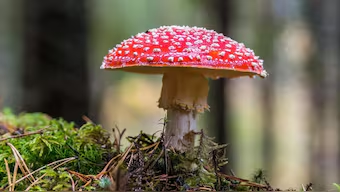
NASA is exploring a rather innovative solution for building future space habitats, and it involves growing structures from mushrooms.
The space agency has awarded a $2 million contract to researchers at NASA’s Ames Research Centre to further study “mycotecture” — a futuristic approach to creating habitable structures using fungi. This idea, which sounds straight out of science fiction, could revolutionise how we build colonies on the Moon and Mars.
Why mushrooms
The main reason NASA is turning to fungi is the high cost of transporting traditional construction materials into space. Launching heavy building supplies is extremely expensive, and the weight of conventional materials makes it impractical for space missions. Instead, NASA is looking at a much more efficient alternative: fungal spores.
According to architect Chris Maurer, who is collaborating with NASA on this project, sending spores and combining them with resources found on the Moon — such as water and lunar soil (regolith) — could dramatically reduce costs.
In addition to being cost-effective, mushrooms offer several other advantages. NASA’s research has shown that fungal structures could protect space dwellers from radiation, provide insulation against extreme temperatures, and can grow quickly, with entire buildings potentially sprouting up in just one or two months.
This makes them a promising alternative to traditional building materials, which can be difficult to transport and assemble in space.
How it works
Building a mushroom house on the Moon would begin with a special package being delivered to the lunar surface. This package would contain basic household necessities and would inflate to create an initial structure. Inside, a mixture of fungal spores, water, and algae would grow an outer shell, which would eventually harden into a sturdy, livable habitat.
Although experiments on Earth have been successful, there are still challenges ahead. Growing structures in space might come with unforeseen complications. Lynn Rothschild, the NASA Ames senior research scientist leading the project, noted several risks.
These include questions about whether the fungal structure would be strong enough, provide adequate insulation, or grow well in space conditions. To address these concerns, NASA plans to send a concept model of these mycotecture structures into space in 2028 as part of the launch of the commercial space station, Starlab.
If successful, future colonies on the Moon and Mars could quite literally “grow” their homes, with mushrooms becoming a key part of extraterrestrial architecture. The idea of mushroom houses popping up on the Moon could soon become a reality, transforming space exploration and how we think about life beyond Earth.